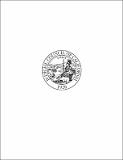|
Reseña:
|
Reseña:In February 1998, Chief Justice Ronald M. George appointed the Task Force on theQuality of Justice. The task force was divided into two subcommittees: theSubcommittee on the Quality of Judicial Service and the Subcommittee on AlternativeDispute Resolution and the Judicial System. This is the report of the Subcommittee onAlternative Dispute Resolution and the Judicial System (hereafter subcommittee) onalternative dispute resolution (ADR) in civil cases.The subcommittee was charged with studying and making recommendationsconcerning:§ The effects of ADR on courts, litigants and the public;§ What state entity has or should have the authority to adopt ethical standardsgoverning retired judges, attorneys, and/or nonattorneys acting as arbitrators ormediators and what ethical standards should be adopted; and§ Whether the standards governing theIn February 1998, Chief Justice Ronald M. George appointed the Task Force on the Quality of Justice. The task force was divided into two subcommittees: the Subcommittee on the Quality of Judicial Service and the Subcommittee on Alternative Dispute Resolution and the Judicial System. This is the report of the Subcommittee on Alternative Dispute Resolution and the Judicial System (hereafter subcommittee) on alternative dispute resolution (ADR) in civil cases. The subcommittee was charged with studying and making recommendations concerning:§ The effects of ADR on courts, litigants and the public;§ What state entity has or should have the authority to adopt ethical standards governing retired judges, attorneys, and/or nonattorneys acting as arbitrators or mediators and what ethical standards should be adopted; and§ Whether the standards governing the referral of disputes by courts to private judges or attorneys should be changed |

